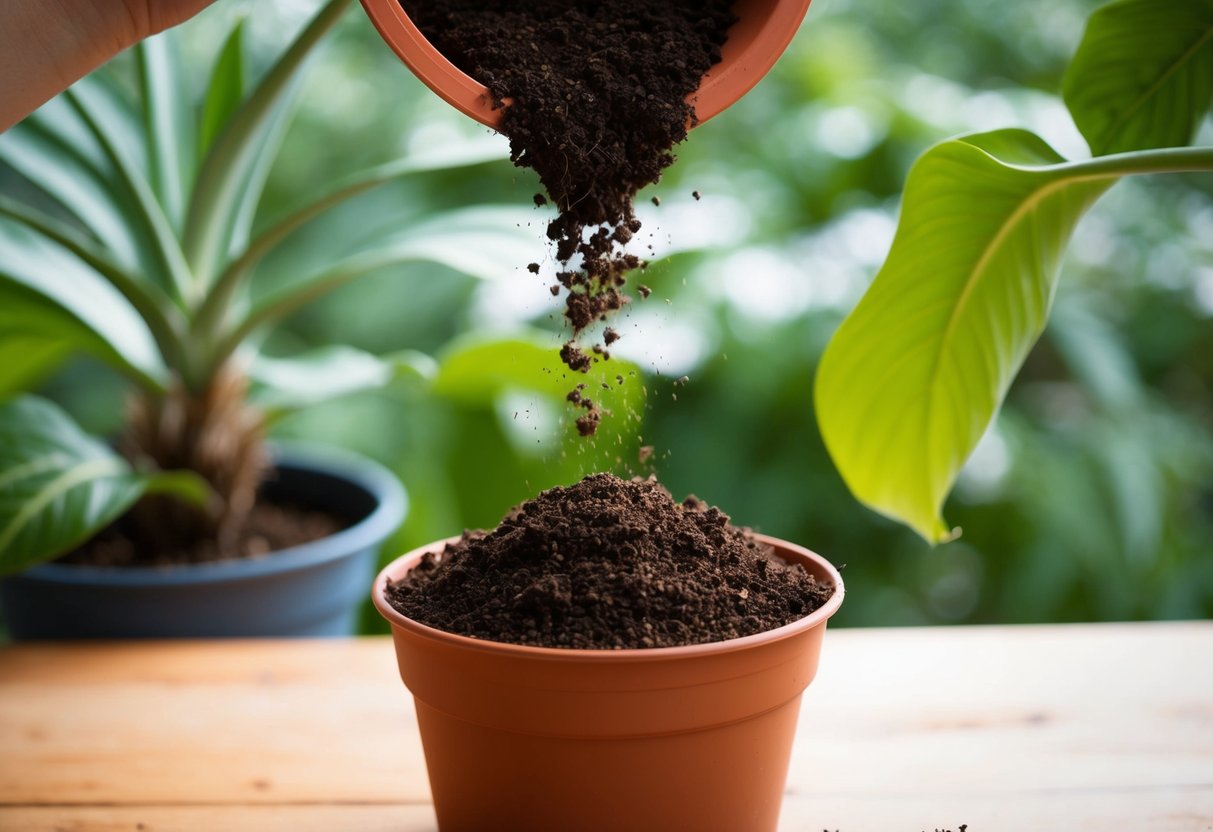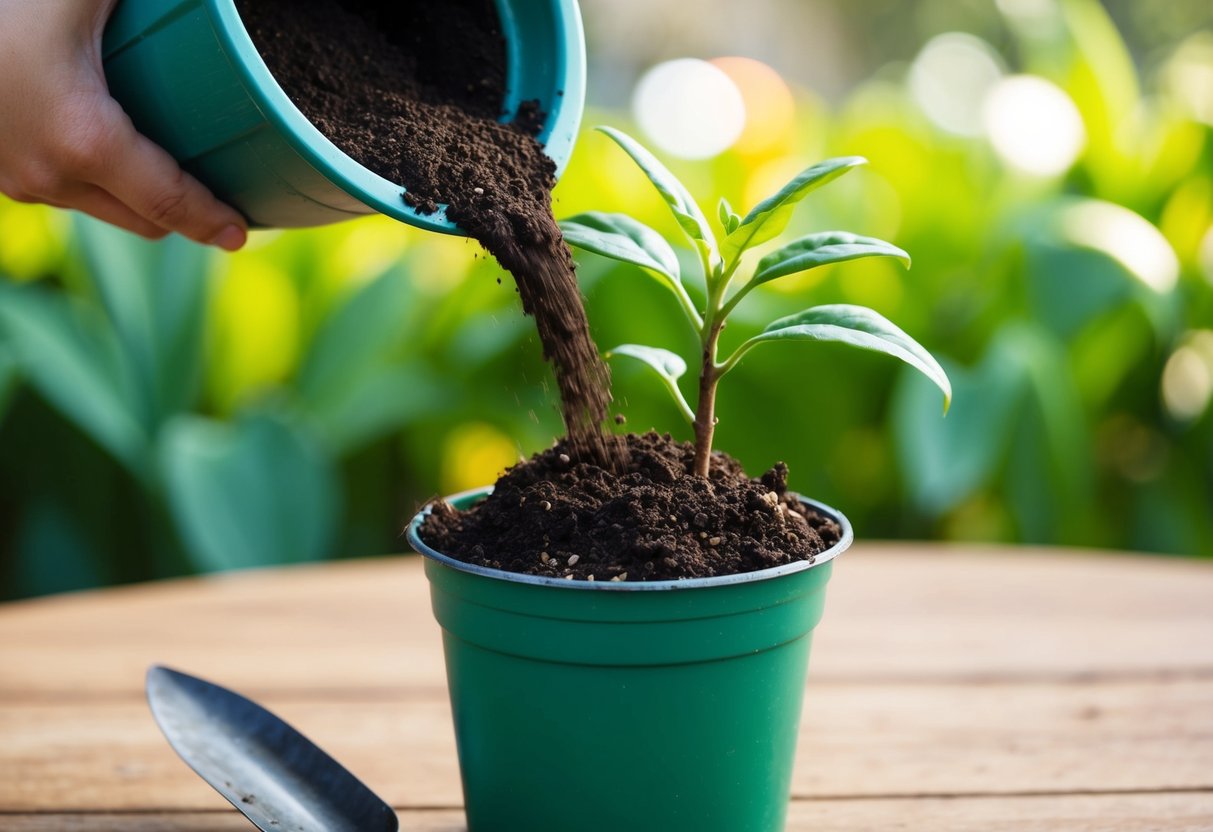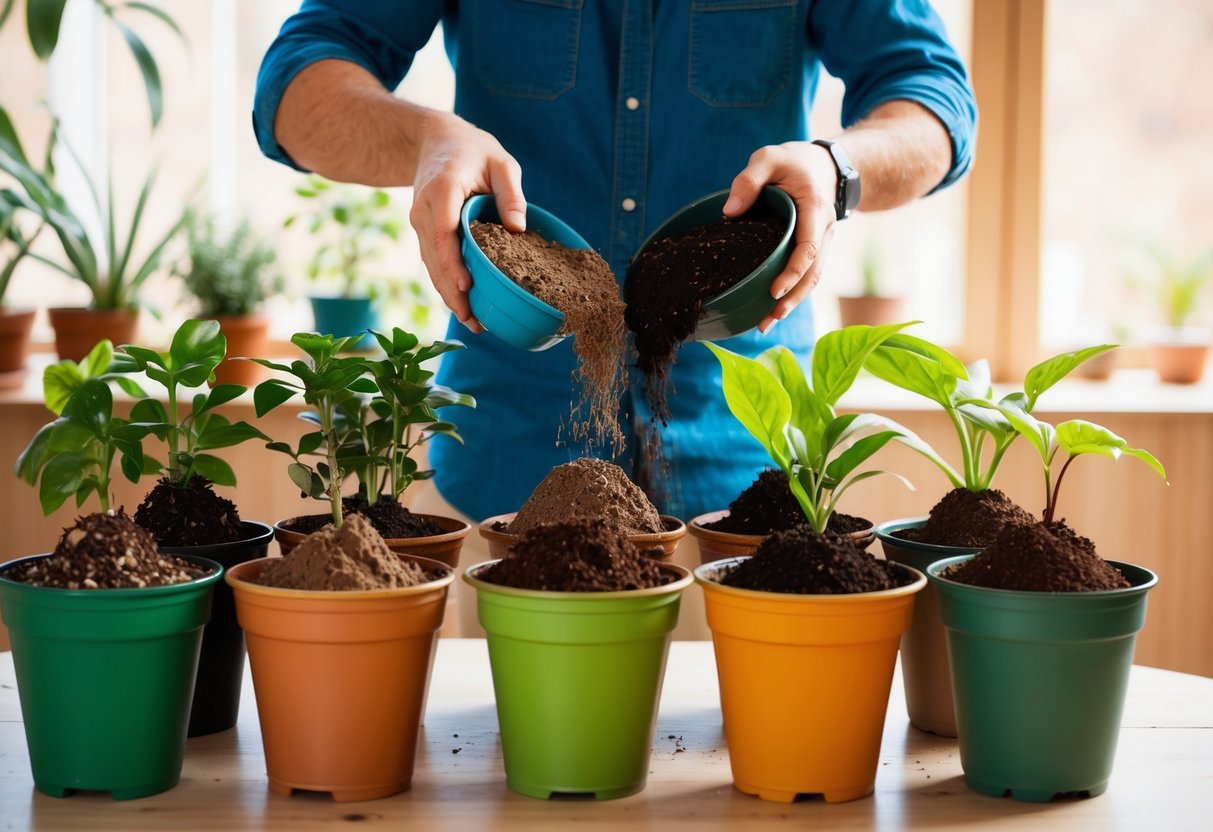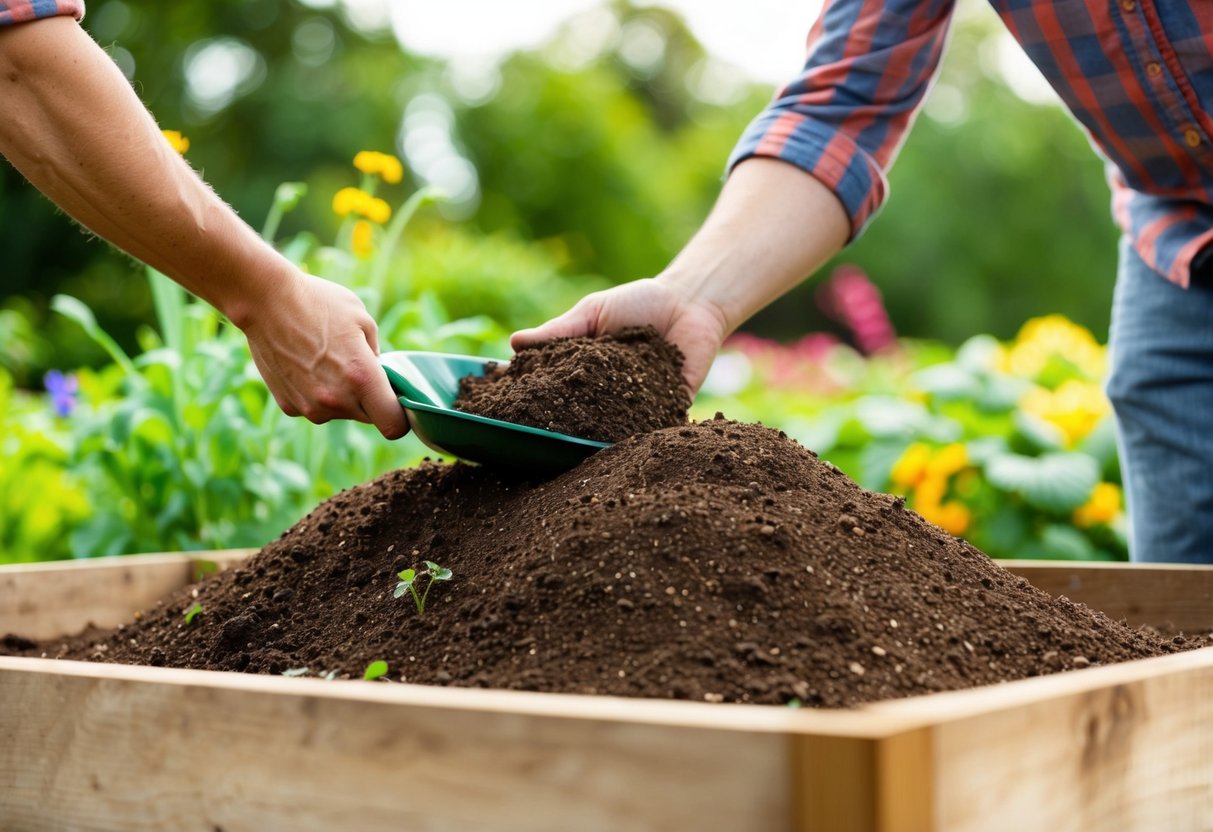Can I Put New Soil on Top of Old Soil? Quick Tips for Gardeners
Wondering if you can simply add new soil over old soil in your garden? Yes, you can! Adding a layer of fresh potting mix on top of old soil can refresh your garden beds and pots. This method is an easy way to improve the quality and health of your plants without completely replacing the old potting soil.

When you layer new soil on top, you help your plants thrive by providing essential nutrients and improving drainage. It’s a simple technique that many gardeners use to give their plants a boost.
To make the most of your gardening efforts, consider testing and balancing the soil’s pH or mixing in a slow-release fertilizer.
Revamping your garden doesn’t have to be complicated. By topping up with fresh soil, you create a nurturing environment for your plants. If you’re ready to learn more tips and tricks, keep reading—we’ll guide you through the process of refreshing your old potting soil and maximizing your garden’s potential.
Assessing Your Garden’s Soil
Improving your garden starts with understanding what’s beneath the surface. Know the components of your soil and check its health to ensure plants thrive.
Understanding Soil Composition
Your garden’s soil is a mix of sand, silt, and clay. Each has a role in drainage and nutrient retention. Good balance means better plant growth. The ideal soil is loamy, with equal parts of these elements, which ensures roots can access water and nutrients efficiently.
Look for organic matter like decomposed leaves or compost. They enrich soil and improve its texture. You might also encounter old potting soil in garden beds. Used in containers, it can sometimes lack nutrients, so mix it with fresh organic material or compost.
Identifying Soil Depletion
Soil depletion happens when nutrients are drained and not replenished. Symptoms include stunted plant growth, poor yields, and changes in leaf color. This can happen over time, especially if the same crops are grown repeatedly without adding organic matter.
To assess, conduct a soil test. Kits are available at garden centers. The test results show pH levels and nutrient content, helping you decide if you need to amend the soil. Possible amendments include compost or aged manure to restore nutrient balance.
Consider using mulch or cover crops to protect and nourish the soil. These practices help maintain moisture and can gradually enrich your garden’s ecosystem.
Benefits of Adding New Soil

Adding new soil on top of old soil can greatly enhance your garden by improving fertility, structure, and pest resistance. Doing so offers a nurturing environment for healthier plants and creates a natural barrier against diseases.
Boosting Soil Fertility
When you add new soil, especially one rich in organic materials like compost, you increase the nutrient content available to your plants. This enrichment makes a significant difference in plant growth and yield. Compost is full of beneficial microbes and nutrients that work to make the soil healthier.
Incorporating organic fertilizers into your new soil layer can further enhance its richness. This added fertility encourages roots to grow deeper and stronger. Consequently, your plants can better absorb the nutrients they need, leading to more vigorous growth.
Enhancing Soil Structure
Adding a layer of new soil helps improve the overall structure of your garden bed. Over time, existing soil can become compacted, making it hard for plants to thrive. New soil lightens this compaction, allowing for better aeration and drainage.
A well-structured soil means roots have easier access to air and water. This reduces waterlogged conditions that can harm your plants. A healthy soil composition also supports a beneficial habitat for microbes, contributing to nutrient cycling and plant health.
Preventing Plant Diseases and Pests
Adding new soil can create a fresh barrier against various plant diseases and pests. Soilborne diseases can persist in existing soil, affecting the health of your plants. Placing a new layer reduces the chance that these pathogens will reach your plants.
This fresh soil helps in controlling pests by potentially introducing beneficial organisms that compete with harmful ones. You can also mix organic pesticides in your new soil to strengthen this barrier. This approach provides a natural way to keep pests at bay, ensuring healthier plants.
How to Properly Add New Soil

Adding new soil to old can rejuvenate your garden and enhance plant growth. By using effective layering techniques and mixing methods, you can create a healthy environment for your plants to thrive.
Layering Techniques
One way to add new soil is through layering. Start by removing debris from the area, like rocks or old mulch. This gives you a clean slate to work on.
Next, consider your soil type. If you are working with heavy clay soil, adding a layer of potting mix or perlite can improve drainage. Aim to add about 2-3 inches of the new soil layer on top.
Level and lightly firm the new soil to make sure it sits evenly across the area. If you’re worried about soil compaction, adding ingredients like worm castings can help keep it airy and rich in nutrients.
This layered approach is great for planting new seeds or laying sod, as it provides a stable and nutrient-rich base.
Mixing with Old Soil
Mixing new soil with the existing soil is another effective strategy. Start by determining the ratio of new to old soil; a common mix is about one-third new soil to two-thirds existing soil. This balance helps reduce the risk of disturbing roots if you already have plants in the area.
Use a shovel or rake to combine the soils thoroughly. Be careful around plants so you don’t harm the root systems. Adding some worm castings as a natural fertilizer can enhance soil health.
This strategy is particularly useful for beds with established plants, as it minimizes root shock while infusing the soil with new nutrients.
Both methods offer simple, practical ways to enhance your garden’s soil quality. Each approach serves different gardening needs while encouraging plant growth.
Special Considerations for Different Plants

When adding new soil on top of old soil, it’s important to understand the needs of different plant types. Flowers, vegetables, herbs, and houseplants each have unique requirements to thrive.
Flowers and Ornamentals
For flowers and ornamental plants, pay attention to the soil’s drainage and nutrient levels. Many flowers like roses and daisies prefer well-drained soil to prevent root rot. Consider adding compost to improve soil fertility and structure.
Some ornamentals, such as ferns, flourish in soil that retains moisture. Adding a layer of mulch can help regulate temperature and moisture. Be careful not to cover the crown of the plant with new soil, as this can damage it.
Vegetables and Herbs
Vegetables and herbs need nutrient-rich soil to grow healthy and flavorful. When adding new soil, mix it with organic compost. This will help to retain moisture and provide nutrients.
Vegetables like tomatoes and peppers benefit from slightly acidic soil.
It’s also important to avoid disturbing the roots when adding new soil. Herbs, such as basil and mint, generally prefer well-drained soil, so ensure proper drainage by adding a layer of gravel if needed.
Houseplants and Hanging Baskets
Houseplants and hanging baskets require specific considerations. Many houseplants thrive in potting mixes that provide excellent aeration. A good mix should contain ingredients like perlite or vermiculite. These help keep the soil light and airy.
For hanging baskets, ensure the soil retains enough moisture while allowing excess water to drain away. Consider lining baskets with materials such as coco coir to hold more moisture. Be careful not to pack new soil too tightly, as this can restrict root growth.
Maintaining and Refreshing Soil Long-Term

Long-term soil health relies on consistent care and specific techniques. By focusing on regular composting and periodic refresh techniques, you can ensure your garden thrives through the seasons.
Regular Composting and Fertilizing
Adding compost regularly enriches soil health. Composting involves collecting kitchen scraps like vegetable peels and eggshells, as well as garden waste like leaves and grass clippings. This practice adds essential nutrients back into the soil, improving its structure. Compost helps maintain the right moisture balance and promotes healthy root development.
Fertilizing complements composting by providing nutrients that might not be in compost. Choose a slow-release fertilizer to provide consistent nutrients. In raised beds or flower beds, this helps improve plant growth over time.
Regularly checking and adjusting your fertilizing routine will ensure your soil stays nutrient-rich.
Seasonal Refresh Techniques
Refreshing your soil seasonally prepares it for new planting cycles. In garden beds, gently till the soil to improve aeration. This helps roots spread and nutrients reach deeper. Adding a layer of fresh soil or compost renews the nutrient content and helps combat soil compaction.
Consider solarization for controlling pests. This technique involves covering the soil with clear plastic to trap heat from the sun, effectively sterilizing it. It’s a natural way to manage pests without chemicals. Be sure to water thoroughly during this process so soil moisture is maintained. This aids the heating process and depth of sterilization.







